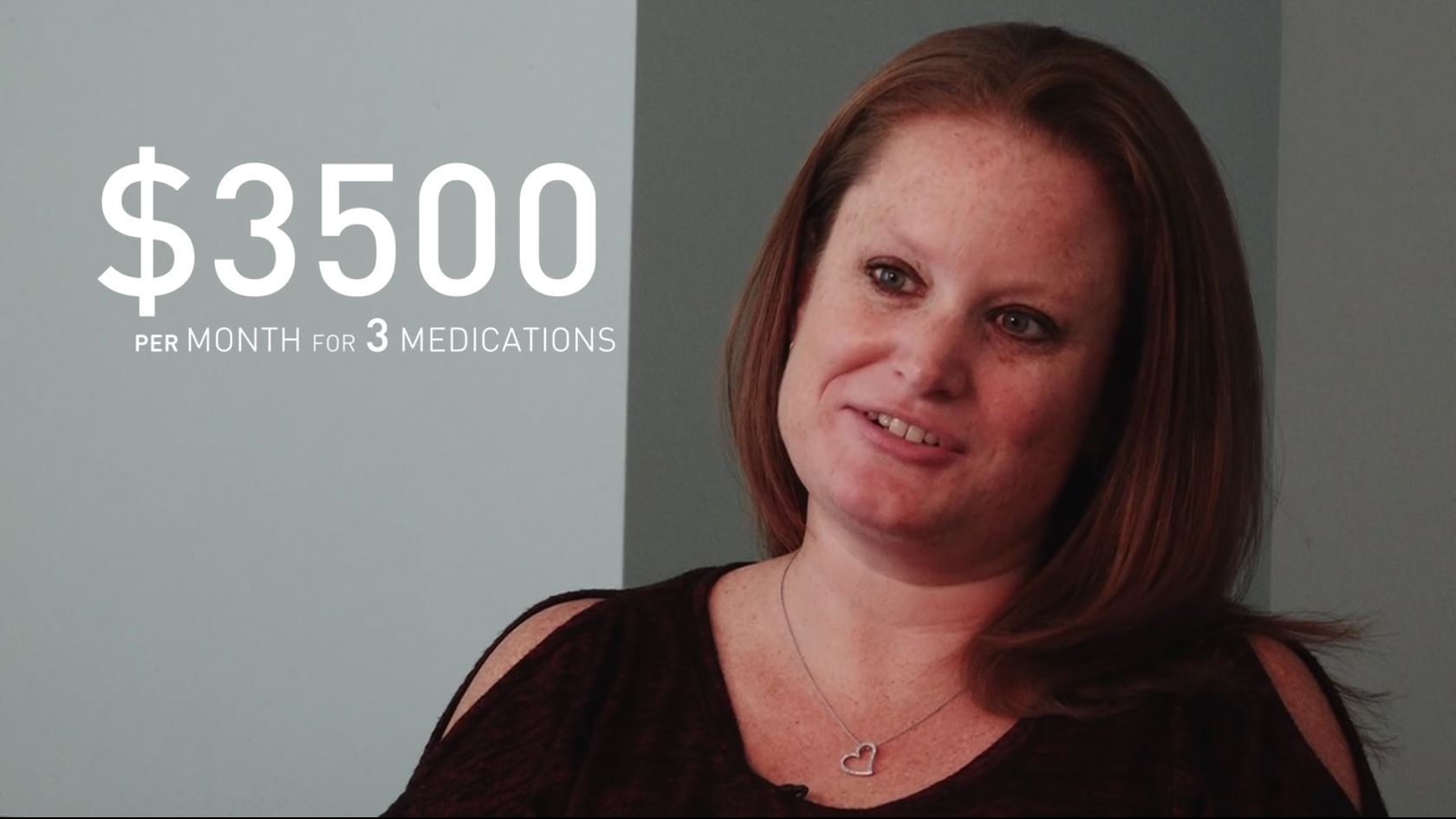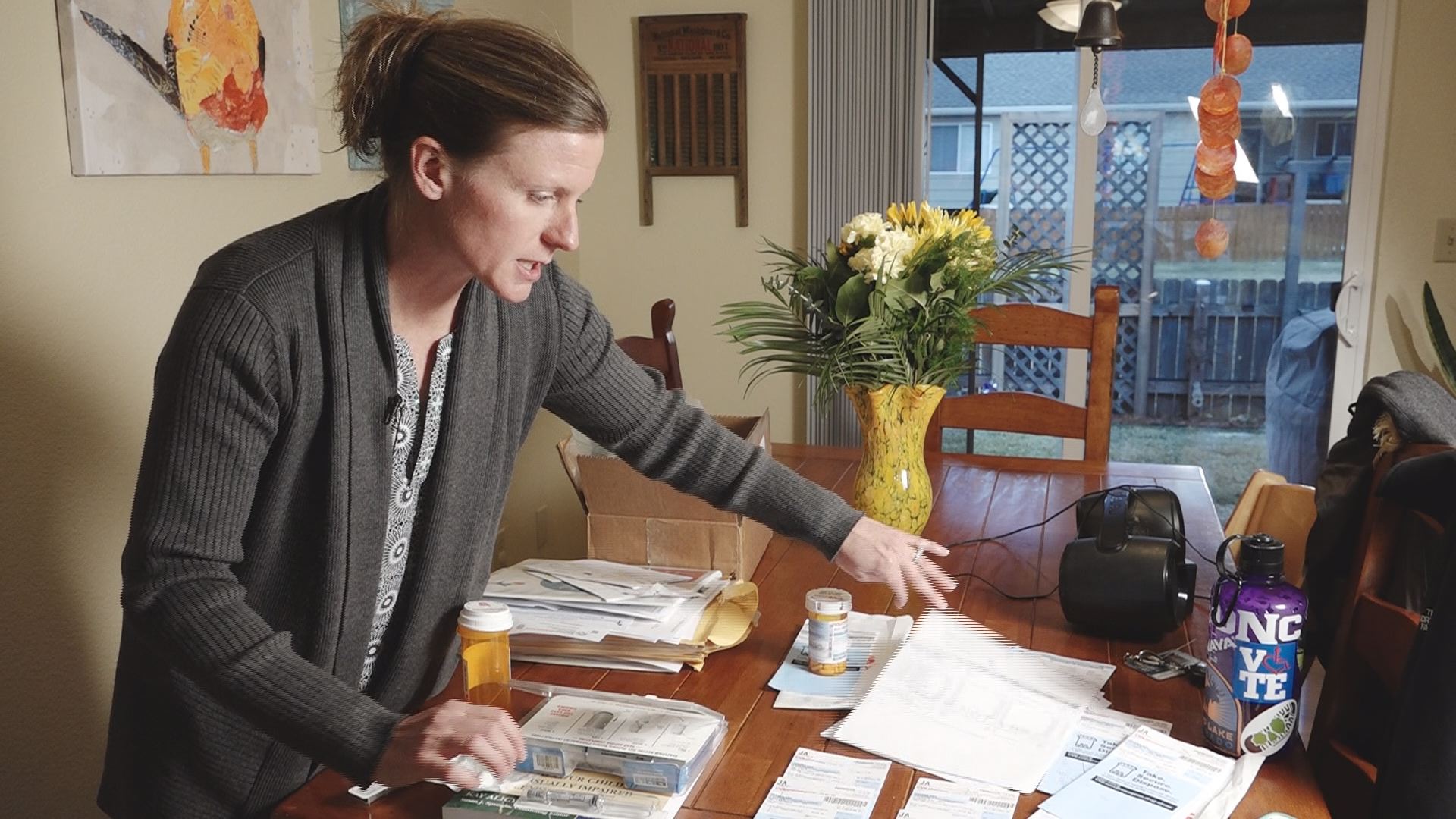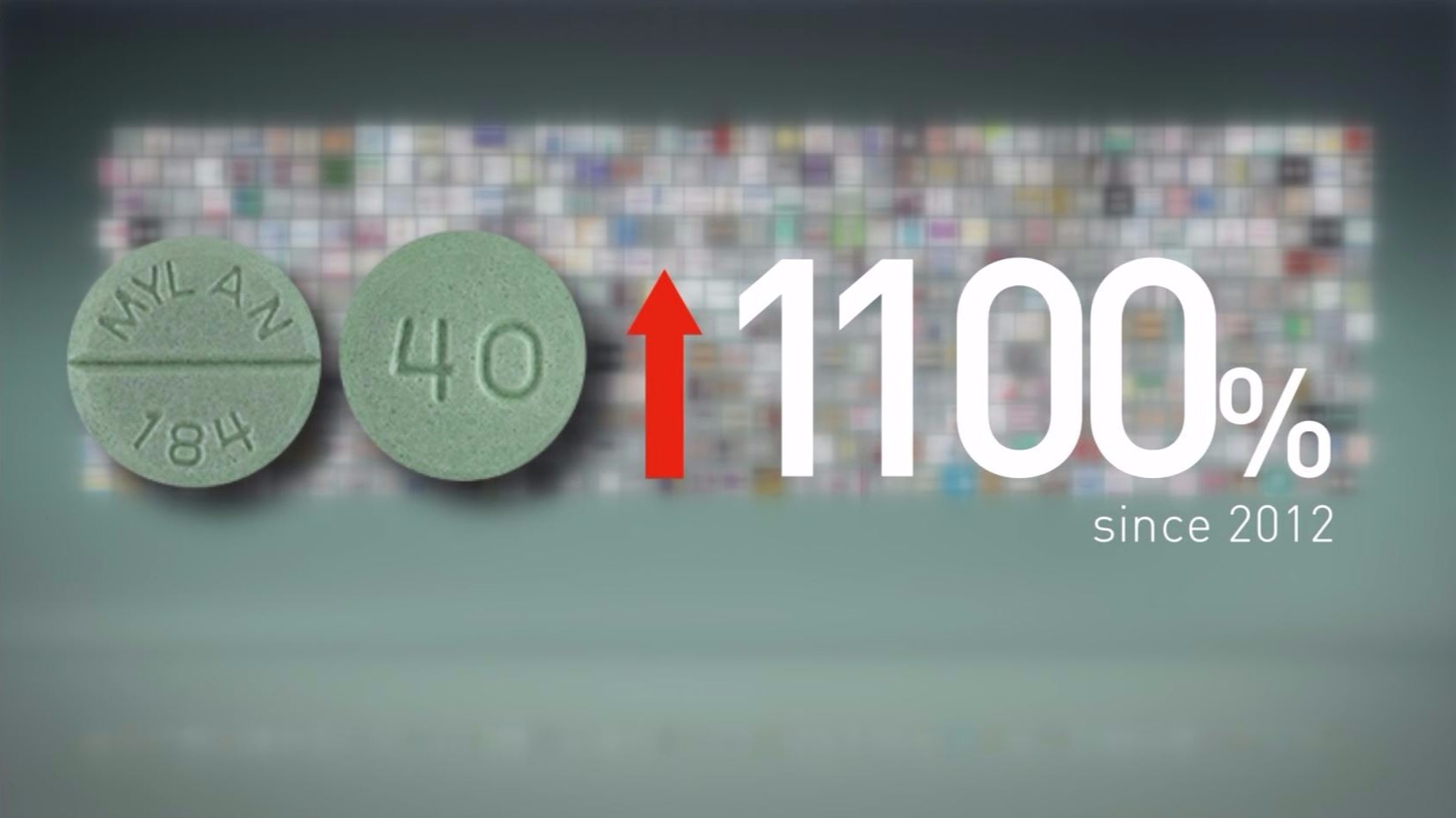As prescription drug manufacturers struggle to repair the image of an industry under fire from both Congress and members of the public, 9Wants to Know’s $IDE EFFECT$ investigation is ready to unveil a list that’s likely not going to help the industry’s cause.
Last year, we gave you a list of 100 significant prescription drug price spikes. Today, we’re ready to expand that list to 500 drugs.
The above interactive graphics show the dates when the earliest version of each drug was FDA approved, what those drugs are used for and the percent increase in per unit price of each drug. If you have a prescription, generic or brand name, that you want to look up, simply type it into the search bar, and remember, we want to hear from you. Send us your story of prescription drug price increases at showusyourbills@9news.com
The drugs are used by millions of Americans for everything from epilepsy to high blood pressure.
Every one of the 500 has seen at least a 50 percent increase in cost since 2012. Most went through FDA approval prior to the turn of the last century.
A few have been around much longer than most people reading this story have been alive on this earth.
And each increase carries with it a story of a family or a parent of a child struggling to come up with the cash to pay for a drug that, in some instances, means the difference between life and death.
DRUGS FOR EPILEPSY HAVE SEEN SIGNIFICANT PRICE INCREASES
Stacey Biggs’s son Tyler suffered his first seizure at the age of two.

Nine years later, Tyler primarily takes three drugs to help control the length and severity of the seizures that still occur at least once a day.
The cost alone is crushing.
“For us, this month alone we spent $3,500,” said Stacey.
Her health insurance plan carries as $2,500 deductible and a $5,000 out-of-pocket maximum. The high cost of the drugs means every year she’ll hit that out-of-pocket maximum before spring.
“It’s all out of pocket at the beginning of the year,” she said.
Tyler is currently taking Onfi, Felbatol, and Banzel to control his seizures. According to the National Average Drug Acquisition Cost Drug database reviewed by 9Wants to Know, the costs of the three drugs have increased by 126 percent, 90 percent and 111 percent respectively since 2012.

Twelve drugs on our list are primarily used by the nearly three million Americans who have epilepsy.
Lorri Avery’s daughter Allie, 10, also suffered her first seizure at the age of two.
Allie currently takes Lamictal. It’s dramatically reduced her number of seizures. “We have gotten it down to six in the last year,” said Lorri.
Lamictal is up 88 percent on NADAC.
The Avery’s health insurance plans includes a $7,000 deductible.
“There is a lot of uncertainty in our lives,” said Lorri. “If I could write a letter to a drug company to get them to stop this from happening, I would do it.”
DRUG COMPANIES RESPOND
9Wants to Know requested responses from 9 drug companies to see if they were interested in following the lead of a few businesses in the industry on the subject of limiting price increases and offering more levels of price transparency.
We received responses from five (We’ve decided to also include additional comments we found online).
9Wants to Know reached out to numerous drug companies asking whether they would agree to cap price hikes to single-digit percent increases annually, and share their net price increases online. We received a variety of responses, and will update these as more companies answer our questions.
Here is what we asked them:
Since November, the investigative team at KUSA-TV (NBC-Denver) has spearheaded a national investigation looking into prescription drug price spikes.
Specifically, under the banner Side Effects, we analyzed the price increases of 100 drugs. Next month, we will expand our list to 500 drugs.
Recently, a handful of pharmaceutical companies – under heavy pressure from the public and members of Congress – have publicly acknowledged plans to change the status quo when it comes to their own pricing strategies.
Among the highlights:
- Allergan has issued a social contract with patients to limit drug price increases to once a year and under 10 percent per year
- Merck and CO., Inc. has issued a “Pricing Action Transparency Report” outlining list price, net price, and average discount changes on its drugs on a year-to-year basis since 2010.
- Norvo Nordisk, in December, pledged to limit its list price for its drugs to no more than single-digit percentages annually.
Our question to you is simple. Will you commit to doing any one of the following three things?
- Limit price increases on drugs to once a year?
- Limit annual list (or net) price increases to 10 percent per year?
- Publicly state list price, net price and average discounts on your line of prescription drugs.
We are not looking for form letters here. We are simply looking for yes or no answers to the previous questions (along with an explanation if you’d like)
We will post your responses on our website www.9news.com.
COLORADO LEGISLATOR RESPONDS TO 9WANTS TO KNOW INVESTIGATION
Rep. Joann Ginal (D-Fort Collins) said she didn’t truly understand the extent of widespread drug price increases until she saw our original $IDE EFFECT$ investigation in November.
She was particularly struck by our story in the rising cost of insulin.

“You brought it to my attention, because I thought insulin was staying at a lower price. It’s an older drug,” she said.
This legislative session, she intends on reintroducing legislation to force drug companies to be more transparent with how they do business.
“We have to get to the bottom of this, and find out why these costs are rising the way they are,” she said.
Our list represents a broad cross-section of drugs used for all sorts of ailments and conditions.
- ADHD – 10 drugs
- Asthma/Allergies – 13 drugs
- Antibiotics – 30 drugs
- Antipsychotics – 10 drugs
- Depression – 9 drugs
- Pain - 37 drugs
- Gastrointestinal – 12
- High blood pressure – 34 drugs
We also cross-reference our list of 500 drugs with Food and Drug Administration approval dates and found the following:
- 1940s – 6 (of 500) drugs approved
- 1950s – 15 drugs approved
- 1960s – 16 drugs approved
- 1970s – 41 drugs approved
- 1980s – 67 drugs approved
- 1990s – 130 drugs approved
- 2000s – 173 drugs approved
- 2010 – 32 drugs approved
(the list does not come to 500 as some drugs have not gone through formal FDA approval)
FULL COVERAGE: See our $ide Effect$ page here
Amanda Jaksha’s 11-year old daughter takes Onfi for her seizures.
In one month, the price tag on the prescription rose from $893 to $1,072 for a month’s supply.
Currently, they qualify for a waiver on Medicaid that covers all of the costs, but she worries the country’s ongoing debate over health insurance reform could force her to pay more, maybe much more, soon.

And she knows she won’t be able afford it.
“What do people propose we do?” she asked. “It’s incredibly expensive.”
But, she like many parents in similar situations, knows she’s stuck. She’ll pay what it takes to help her daughter’s health.
Could she use a little more understanding from drug companies?
“Yes, but it’s not in their business plan,” she said.
(For more on the other part of the pharmaceutical drug supply chain and its role in price increases see our previous report on pharmacy benefit managers: http://on9news.tv/2f01Px8)
ABOUT THE DATA
Our database of 500 drugs includes generic and brand name products for treatments of all types of ailments, including pain, high blood pressure, allergies or asthma, diabetes, skin care, antibiotics, and on and on.

Our database is a combination of Food and Drug Administration (FDA) data and cost data from the Centers for Medicare and Medicaid Services (CMS).
CMS conducts a weekly survey of pharmacies around the country, asking how much money they pay for a given prescription drug per unit. Those results are collected in the National Average Drug Acquisition Costs (NADAC) database.
CMS launched the survey in 2012 -- so the earliest date for price comparison is Oct. 2012. Not all of the drugs on our list were included in that earliest survey, so some of the drugs included compare the 2016 price to a that collected by CMS in 2013.
EXPLORE THE DATA:
These searchable databases show when a drug was released, what it is used to treat and how much the price increased since 2012 or 2013 to the end of 2016.

All of the drugs on our list saw an increase of 50 percent or more. All of the drugs are prescriptions, though some, like Niacin, may be picked up over-the-counter at certain doses.
20 drugs on our list are not approved by the Food and Drug Administration. Those include a variety of vitamins and supplements, which doctors may prescribe, but do not have to be approved by the FDA.
Phenobarbital is also an unapproved drug, but has been used since the 1930s. It pre-dates the Food and Drug Administration, and has thus never received FDA approval.
Our list is not comprehensive of every drug that has increased by greater than 50 percent in the last five years, and neither does the NADAC database track every prescription drug in use in the United States.
